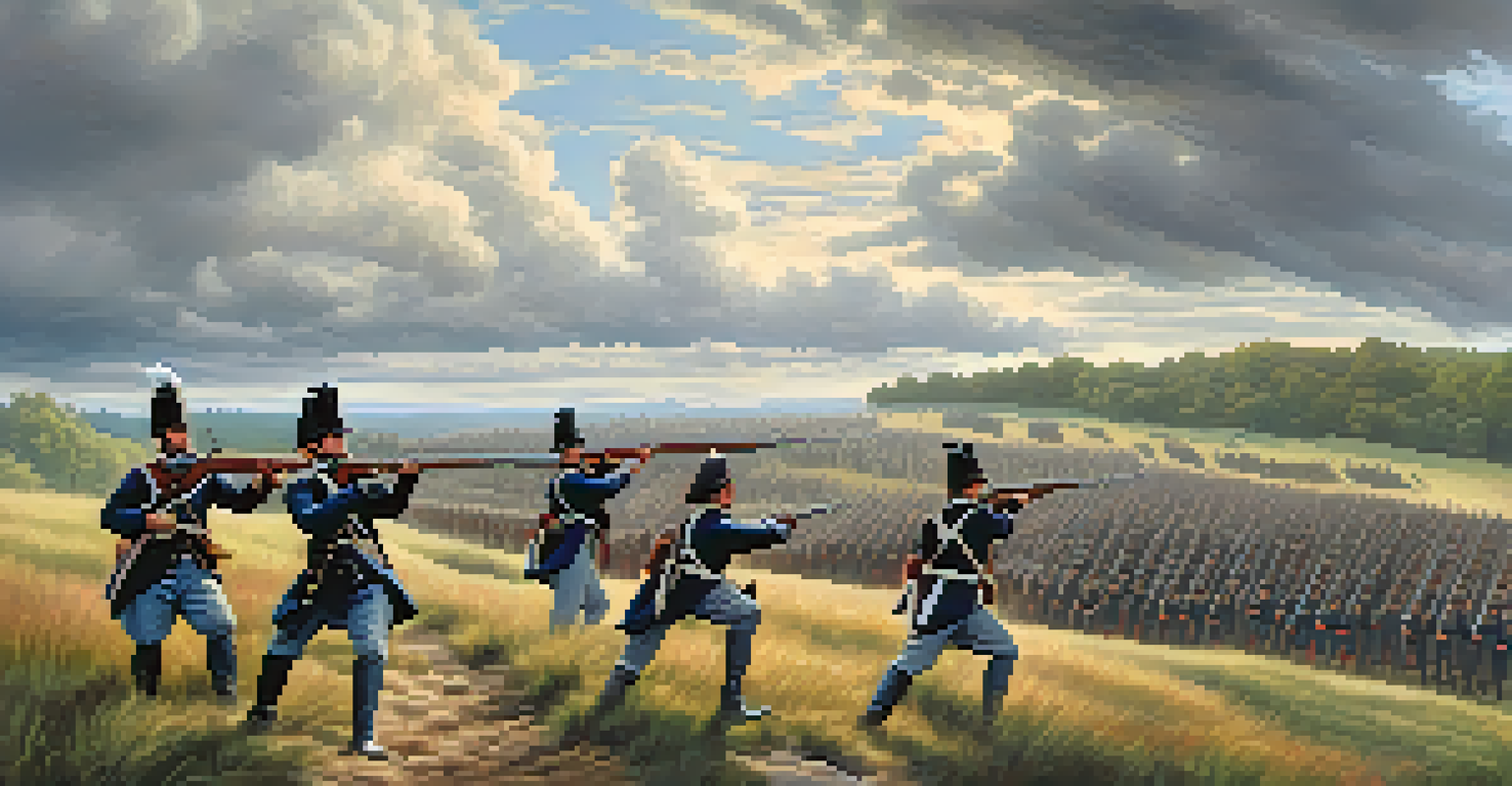The Role of Gettysburg in the American Civil War Revealed

Introduction to Gettysburg and Its Significance
Gettysburg is often regarded as a turning point in the American Civil War. This small town in Pennsylvania became the site of one of the war's most crucial battles in July 1863. Understanding its significance requires us to delve into the events leading up to the confrontation and the broader implications for the Union and the Confederacy.
The brave men, living and dead, who struggled here, have consecrated it, far above our poor power to add or detract.
The battle was not just a clash of armies; it was a fight for the very soul of the nation. With both sides believing they were fighting for a just cause, the stakes could not have been higher. As we explore the role of Gettysburg, we see how it encapsulated the intense emotions and motivations of the time.
From its strategic location to its historical context, Gettysburg was more than just a battlefield; it became a symbol of resilience and determination. The outcomes of these three days in July would forever shape the course of American history.
The Prelude to Battle: Context and Tensions
Before the battle unfolded, tensions between the North and South were already at a boiling point. The years leading up to Gettysburg saw numerous skirmishes and conflicts that highlighted the deep-seated divisions in the country. Issues like slavery, states' rights, and economic differences fueled the fire, making war inevitable.

In the spring of 1863, Confederate General Robert E. Lee launched an ambitious invasion into the North, hoping to secure a decisive victory that would sway public opinion and potentially lead to peace. This aggressive move brought the Confederacy into direct confrontation with Union forces, setting the stage for Gettysburg.
Gettysburg: A Turning Point
The Battle of Gettysburg was a pivotal moment in the American Civil War, shaping the future of the Union and the Confederacy.
Understanding the backdrop of these events is crucial to appreciating the significance of the battle. The ideological and political stakes were immense, and the outcome would have lasting implications for the nation.
The Battle Begins: Key Events of July 1
The Battle of Gettysburg commenced on July 1, 1863, with Confederate forces engaging Union troops in a fierce fight. Initially, the Confederates gained ground, pushing Union soldiers back through the town. However, the tenacity of the Union forces prevented a complete rout, establishing a defensive position on Cemetery Hill.
In great deeds, something abides. On great fields, something stays. Formless things and a spirit of a place, and the spirit of the people who fought there.
As the day progressed, both sides suffered heavy casualties, with the Union army facing the daunting challenge of maintaining their lines. The intensity of the battle highlighted not only the bravery of the soldiers but also the strategic importance of holding Gettysburg.
By the end of the first day, the stage was set for an even more ferocious confrontation. The Union's determination to hold their ground would play a pivotal role in the battle's outcome.
Day Two: Strategic Maneuvers and Key Locations
The second day of the battle, July 2, saw fierce fighting at critical locations such as Little Round Top and the Wheatfield. Union General George Meade's forces had to quickly adapt to the shifting strategies of Lee's army, which aimed to flank the Union lines.
The defense of Little Round Top became iconic, showcasing the heroism of troops like the 20th Maine under Colonel Joshua Chamberlain. His famous bayonet charge not only held the position but also inspired Union forces throughout the battle.
Impact of Pickett's Charge
Pickett's Charge on the third day marked a significant failure for the Confederacy, highlighting the futility of their hopes for victory in the North.
These key maneuvers on both sides illustrated the tactical complexity of the battle. Each decision made had the potential to alter the course of history, underscoring the importance of leadership and strategy in warfare.
The Climax: Pickett's Charge on Day Three
The third day of the battle culminated in the infamous Pickett's Charge, a bold but devastating assault by Confederate forces against the center of the Union lines. Led by General George Pickett, this charge aimed to break the Union's resolve and turn the tide of the battle in favor of the Confederacy.
As thousands of Confederate soldiers advanced across open fields, they faced a hail of Union fire, resulting in staggering casualties. This moment highlighted the desperation of the Confederate strategy and the grim realities of war, where bravery often met with overwhelming firepower.
The failure of Pickett's Charge marked a turning point, not just for the battle but for the entire war. It became a symbol of the futility of the Confederacy's hopes for victory in the North.
Aftermath: The Impact of Gettysburg
The aftermath of Gettysburg had profound implications for both the Union and the Confederacy. With approximately 51,000 soldiers killed, wounded, or missing, the battle was one of the bloodiest in American history. The Union's victory bolstered morale and provided a critical boost to their fighting spirit.
For the Confederacy, the loss at Gettysburg marked a turning point in their fortunes. It was a significant setback that would lead to dwindling resources and loss of momentum in their campaign. The psychological impact of the defeat resonated deeply within the South.
Legacy of Sacrifice and Unity
Gettysburg's legacy endures as a symbol of sacrifice and the ongoing struggle for equality in America, commemorated through memorials and historical preservation.
As the nation mourned its losses, Gettysburg became a rallying cry for the Union cause. The sacrifices made there underscored the fight for liberty and equality, ultimately shaping the future of the United States.
Legacy of Gettysburg: Memory and Commemoration
The legacy of Gettysburg extends far beyond the battlefield itself. The site has become a place of remembrance and reflection, with the establishment of the Gettysburg National Cemetery, where President Abraham Lincoln delivered his famous Gettysburg Address in November 1863. This speech emphasized the principles of equality and national unity.
Today, Gettysburg is a symbol of sacrifice and the enduring spirit of the American people. Historic preservation efforts have ensured that the lessons learned from the battle continue to resonate with future generations, reminding us of the costs of war.

Visiting Gettysburg allows people to connect with history in a profound way. The stories of bravery, loss, and resilience serve as a reminder of the ongoing struggle for justice and equality in America.